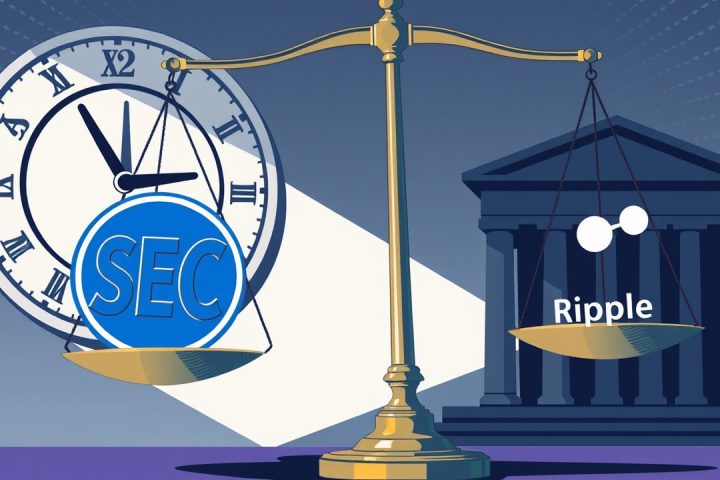Concerns Over Blockchain Security
Marvin Bertin, the co-founder and CEO of Maestro, has raised alarms over the potential security vulnerabilities associated with bridges and wrapped assets within the blockchain ecosystem. His remarks underscore a pressing concern in the decentralized finance landscape—despite the utility that cross-chain interoperability provides, he posits that these solutions threaten the very foundation of Bitcoin’s security framework.
Warnings About Bridges and Wrapped Assets
In a recent post on social media platform X, Bertin warned against the dangers of these technologies, stating,
“Bridges are risky! Wrappers are worse. If it’s not on Bitcoin, it’s not Bitcoin.”
This cautionary statement emphasizes his view that wrapped assets and cross-chain methods may introduce critical weaknesses that can endanger Bitcoin’s integrity.
Centralized Control and Systemic Flaws
Bertin’s critique is heavily focused on the concept of centralized control over keys, which creates significant vulnerabilities. He referenced notable incidents in the space, including the Ronin Network breach, where nearly $540 million was siphoned off, and the Wormhole bridge compromise that resulted in a staggering $320 million loss. These incidents highlight a systemic flaw: the reliance on a small group of custodians who manage the keys to the underlying assets. If these custodians are compromised, the ramifications can be catastrophic, a stark contrast to Bitcoin’s decentralized nature where control is dispersed among a multitude of miners and network nodes, thus making it nearly impossible for a single point of failure to exist.
Complexity and Vulnerabilities
Further complicating matters, Bertin pointed out that the complexity of smart contracts involved in bridges and wrapped assets expands the attack surface significantly. Unlike Bitcoin’s meticulously straightforward scripting language, these intricate contracts—which govern the mechanics of locking, minting, and burning tokens—are susceptible to flaws and bugs that can be exploited by malicious actors. Such complexity heightens the risk of novel vulnerabilities manifesting, further detracting from the security users might assume they share with Bitcoin.
Advocating for UTXO DeFi
Bertin notes that the introduction of centralized authority and complex contract logic exposes wrapped Bitcoin to heightened risks and undermines the security assumptions tied to Bitcoin’s architecture. As a potential solution, Bertin champions the concept of “UTXO DeFi,” advocating for a decentralized finance ecosystem built directly on Bitcoin’s infrastructure without the need for bridges or wrapped assets. He discussed how this innovative approach utilizes Bitcoin’s unspent transaction output (UTXO) system and partially signed bitcoin transactions (PSBTs) to create secure and trustless DeFi applications. Noteworthy projects like Magic Eden, which utilizes PSBTs for trading Runes and Ordinals, and Liquidium, which implements Discreet Log Contracts for non-custodial lending, exemplify how such solutions can effectively harness Bitcoin’s native security while delivering robust financial capabilities.
Challenges Ahead
Nonetheless, Bertin recognizes that the path towards mainstream adoption of UTXO DeFi is fraught with obstacles, including a steeper learning curve for developers and limited tools that support writing UTXO scripts. Additionally, users may face difficulties in managing the complexities associated with multi-party PSBT interactions, which are essential for numerous applications in this emerging space.
Future of Decentralized Finance
Addressing concerns regarding existing projects that depend on wrapped assets for liquidity, Bertin argued that many in the industry fail to grasp the substantial systemic risks these methods entail. He envisions a future of decentralized finance that utilizes native, secure constructs without the inherent vulnerabilities of current cross-chain solutions. Innovations such as intent-based solvers, like Across and Uniswap X, can facilitate cross-chain transactions without requiring asset bridging, thereby circumventing common pitfalls.
Challenges for Traditional Finance
On the topic of traditional finance institutions considering Bitcoin integrations, Bertin elaborated on three main challenges: the murky regulatory environment, operational and security complications, and alignment with custody solutions. His firm, Maestro, is poised to help such institutions navigate these hurdles while adhering to compliance.
“We take a partnership-based approach to enable institutions to effectively incorporate Bitcoin into their treasury and investment strategies, building their capabilities and confidence in the process,”
Bertin concluded.




